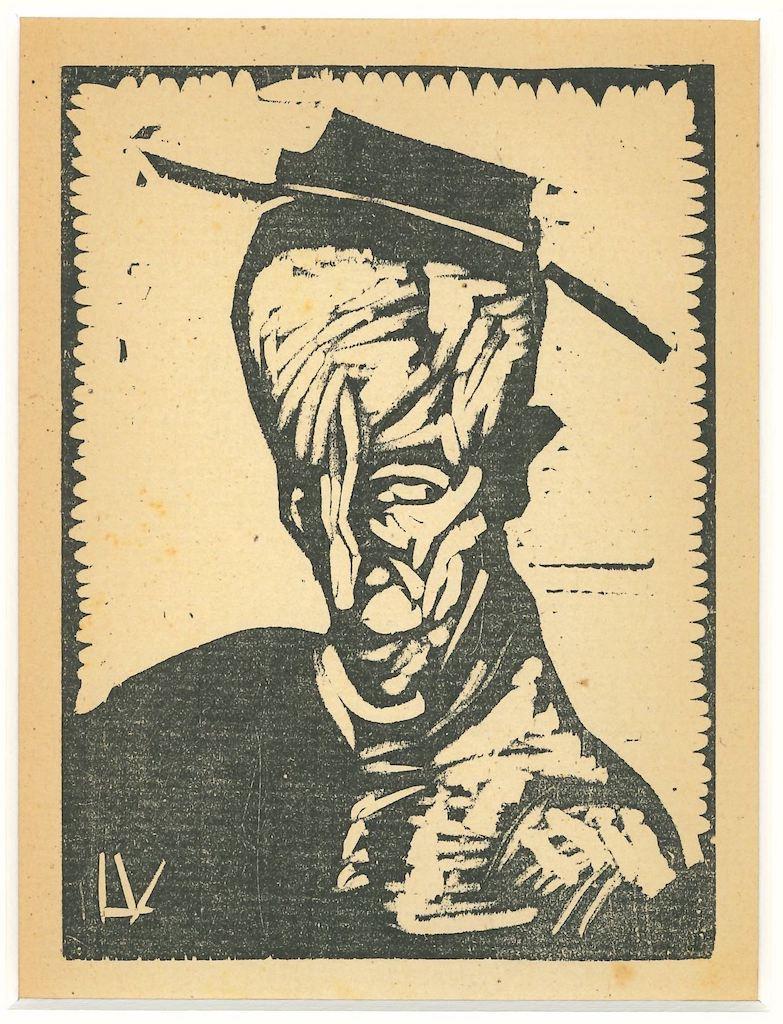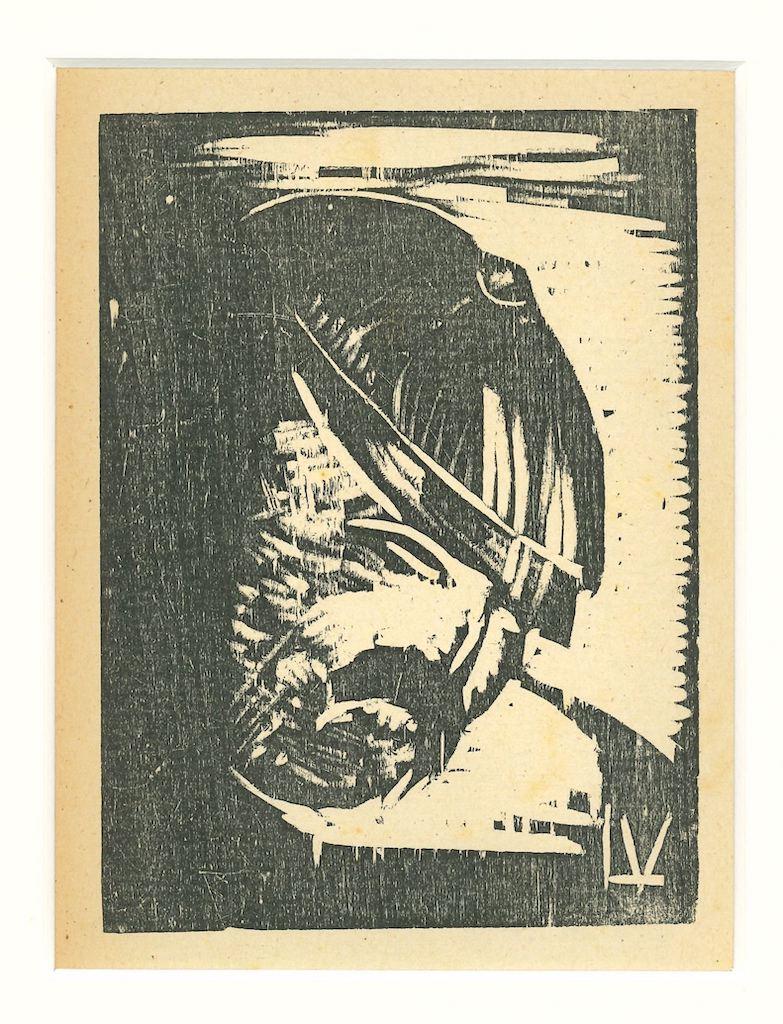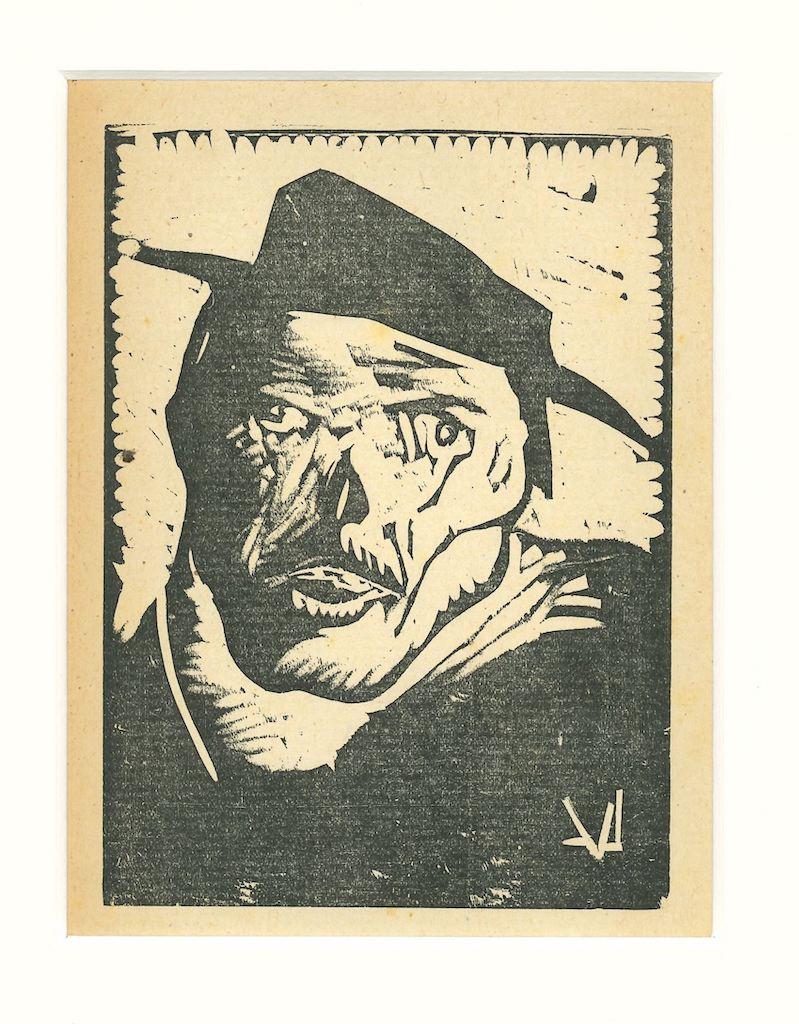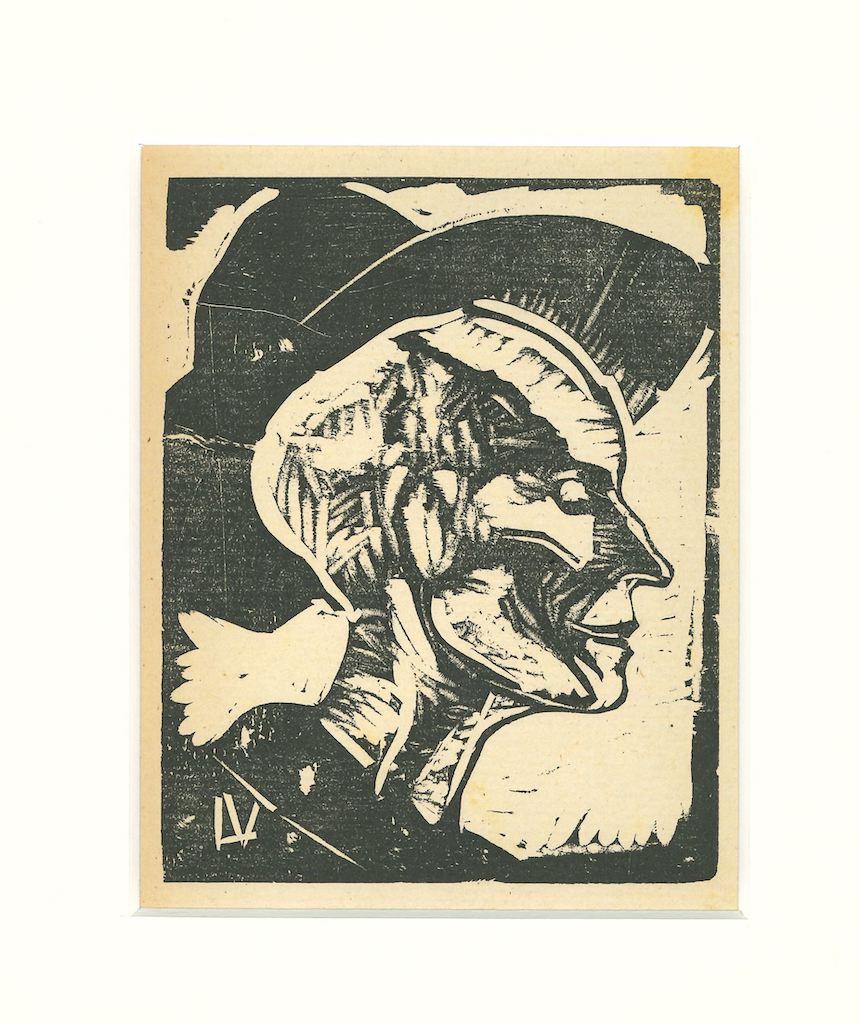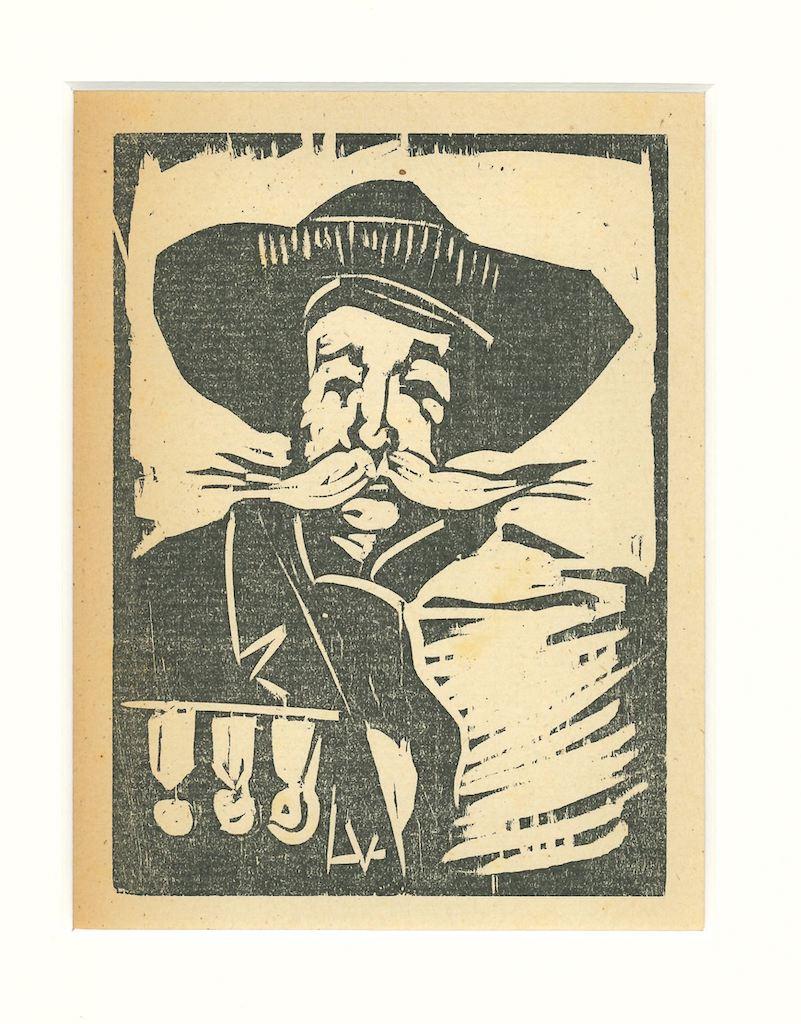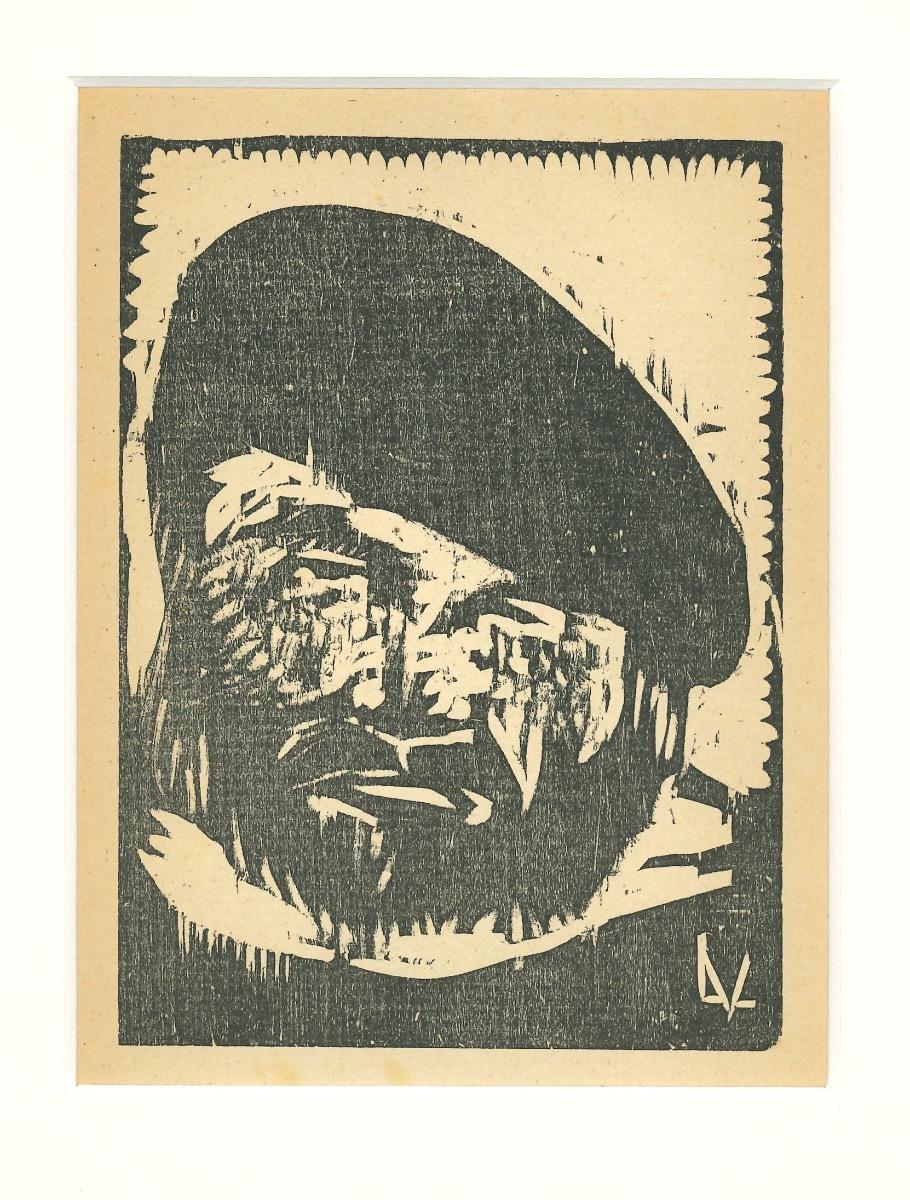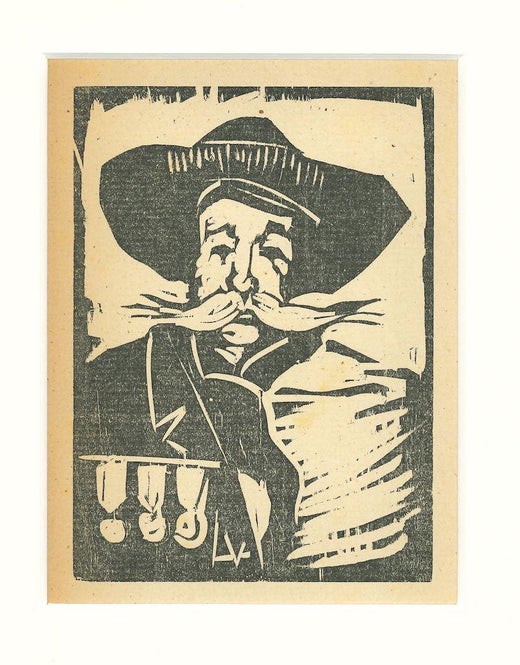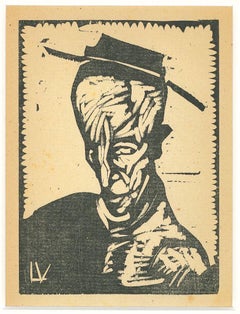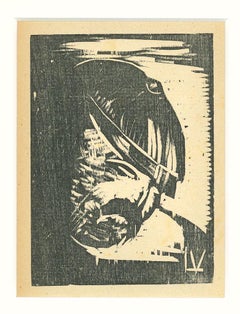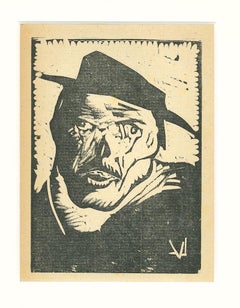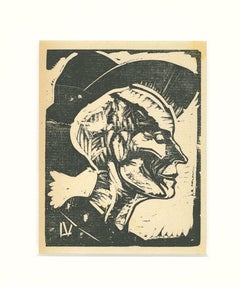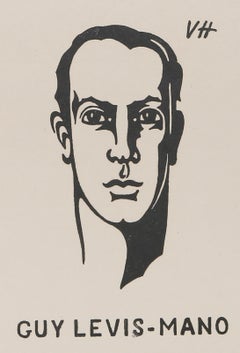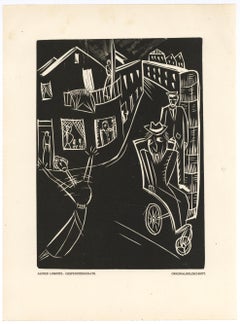Items Similar to Drunk - Woodcut by Lorenzo Viani - 1930
Want more images or videos?
Request additional images or videos from the seller
1 of 2
Lorenzo VianiDrunk - Woodcut by Lorenzo Viani - 19301930
1930
$235.03
£179.39
€200
CA$331.28
A$363.81
CHF 189.99
MX$4,342.22
NOK 2,406.97
SEK 2,243.39
DKK 1,523.61
About the Item
Drunk is an original woodcut print on paper, realized by the Italian Artist Lorenzo Viani in 1930 ca.
Monogram of the artist on the lower right" LV".
The State of preservation is excellent.
Included a Passepartout: 40 x 30 cm.
The artwork represents a portrait of a Drunk man through strong and thick strokes, with a strong primitivism visible in the synthetic lines, resembling the Expressionistic style. Lorenzo Viani (Viareggio, 1st November 1882 - Lido di Ostia, 2nd November 1936) was an Italian painter, engraver, writer and poet. Viani transfers the life and human life of the weakest into the canvas, with strong chromatic impressions and with a decisive and fast brushstroke, an intense, expressive, and at times extremely melancholy painting. What makes Viani a great teacher, too often forgotten, is the mastery in making drama and lyricism and poetic grace coexist in his works, in feeling the humble emotion in front of the dispossessed. Viani's narrative work is a typical example of dialectal expressionism. Its origins are in a disturbing vision of things, disturbed from the depths, which translates into an exasperated deformation of landscapes like human faces. The writer makes use of extraordinary verbal richness, drawn from the dialectal background of Viareggio, from the seafaring or soldierly or cunning jargon, where it is possible to obtain expressionistic exasperations.
- Creator:Lorenzo Viani (1882 - 1936, Italian)
- Creation Year:1930
- Dimensions:Height: 7.49 in (19 cm)Width: 5.12 in (13 cm)Depth: 0.04 in (1 mm)
- Medium:
- Movement & Style:
- Period:
- Framing:Framing Options Available
- Condition:Insurance may be requested by customers as additional service, contact us for more information.
- Gallery Location:Roma, IT
- Reference Number:Seller: M-1111261stDibs: LU65037309952
Lorenzo Viani
Active in Viareggio in the first half of the 20th century, he is regarded as one of the greatest exponents of Italian expressionism. Lorenzo Viani was born in Viareggio on 1 November in Via della Fornace where he spent his childhood between the docks and the palace.
He attended primary schools, but only up to the third grade In 1893, he was put to work in the workshop of barber Fortunato Primo Puccini, where he met painter Plinio Nomellini, who had a positive influence on his artistic maturation, and on his advice, he enrolled at the Academy of Fine Arts in Lucca.
In 1904, he was admitted to the Free School of Nude at the Academy of Fine Arts in Florence.
Returning to Viareggio, he settled in Torre del Lago and joined the 'Compagnia della Bohème' and during this period Viani exhibited some drawings at the 7th Venice Biennale and at the National Exhibition of Humour Art in Messina.
In early 1908 he went to Paris, where he visited the Van Gogh retrospective at the Galerie Bernheim-Jeune. After a short stay in the Fleury house, he lived in la Ruche, rue Dantzig. He made a second trip to Paris and returned to Italy in May 1913, establishing new friendships in the Futurist milieu of “Lacerba”, in particular with Giovanni Papini, Giuseppe Ungaretti, Giosuè Borsi and Ottone Rosai. In February 1915 Viani supported Cesare Battisti during a tumultuous rally at the Politeama in Viareggio and exhibited ten woodcuts at the III Roman Secession. Between October and November he exhibited 624 works at the Palazzo delle Aste in Milan
He became an artist known throughout Italy and his exhibitions were an essential meeting place for a cultured and international public. During this period he painted Georgica (or The Works of the Sea, the Cycle and the Earth) and participated with great success in the 17th Venice Biennale with Georgica and Veliero, as well as in various Futurist evenings: his solo exhibition at Villa Paolina in Viareggio was inaugurated with a speech by Marinetti. Viani exhibited Il volto santo (now in the Viareggio Municipal Museum) at the I Quadriennale in Rome in 1931.
He worked with great fervour on panels for the Viareggio railway station, had a solo exhibition at the Galleria Ferroni in Florence and at the inauguration of the Viani Gallery in the house in Fossa dell'Abate (today's Lido di Camaiore), which he inherited from his wife. His poor health did not prevent him from exhibiting at the 19th Venice Biennale, in Viareggio, Lucca, at the 2nd Quadriennale in Rome and at the Lyceum in Florence. In 1936, he was commissioned to paint a series of marine-themed paintings for the “IV Novembre” College in Ostia and, after several days of non-stop frenetic work, he was unable to attend the inauguration.
Viani was an extraordinary and exemplary figure of the cultural and intellectual flowering that characterised Tuscany and all of Italy at the turn of the 19th and 20th century.
About the Seller
4.9
Platinum Seller
Premium sellers with a 4.7+ rating and 24-hour response times
1stDibs seller since 2017
7,820 sales on 1stDibs
Typical response time: 1 hour
- ShippingRetrieving quote...Shipping from: Roma, Italy
- Return Policy
More From This Seller
View AllDrunk - Woodcut by Lorenzo Viani - 1930
By Lorenzo Viani
Located in Roma, IT
Drunk is an original woodcut print on paper, realized by the Italian Artist Lorenzo Viani in 1930 ca.
The State of preservation is excellent.
Monogramm...
Category
1930s Modern Figurative Prints
Materials
Woodcut
Drunk - Woodcut by Lorenzo Viani - 1930
By Lorenzo Viani
Located in Roma, IT
Drunk is an original xilograph on paper, realized by the Italian Artist Lorenzo Viani in 1930 ca.
The State of preservation is very good.
Monogrammed L...
Category
1930s Modern Figurative Prints
Materials
Woodcut
Drunk - Woodcut by Lorenzo Viani - 1930
By Lorenzo Viani
Located in Roma, IT
Drunk is an original woodcut on paper, realized by the Italian Artist Lorenzo Viani in 1930 ca.
The State of preservation is excellent.
Monogrammed LV....
Category
1930s Modern Figurative Prints
Materials
Woodcut
Portrait - Woodcut by Lorenzo Viani - 1930
By Lorenzo Viani
Located in Roma, IT
Portrait is an original woodcut on paper, realized by the Italian Artist Lorenzo Viani in 1930 ca.
The State of preservation is excellent.
Monogrammed...
Category
1930s Modern Figurative Prints
Materials
Woodcut
Portrait - Woodcut by Lorenzo Viani - 1930
By Lorenzo Viani
Located in Roma, IT
Portrait is an original woodcut on paper, realized by the Italian Artist Lorenzo Viani in 1930 ca.
The State of preservation is excellent.
Monogrammed...
Category
1930s Modern Figurative Prints
Materials
Woodcut
Fisherman - Woodcut by Lorenzo Viani - 1930 ca.
By Lorenzo Viani
Located in Roma, IT
Fisherman is an original woodcut print on paper, realized by the Italian Artist Lorenzo Viani in 1930 ca.
Monogram of the artist on the lower right" LV"...
Category
1930s Modern Portrait Prints
Materials
Woodcut
$152 Sale Price
35% Off
You May Also Like
Guy Levis-Mano, Modern Woodcut by Valentine Hugo
By Valentine Hugo
Located in Long Island City, NY
Valentine Hugo, French (1887 -1968) - Guy Levis-Mano, Year: 1975, Medium: Woodcut on laid paper, signed in the plate, Edition: 255, Image Size: 5 x 3 inches, Size: 10 x 7.5 in. ...
Category
1970s Modern Portrait Prints
Materials
Woodcut
"Raskolnikow" original linocut
Located in Henderson, NV
Medium: original linoleum cut. Printed in 1920 for Das Kunstblatt, and published in Berlin by Verlag Gustav Kiepenheuer. Image size: 6 1/4 x 4 1/4 inches (160 x 105mm). Sheet size: 1...
Category
1920s Expressionist Prints and Multiples
Materials
Linocut
"Gespenstersonate" original woodcut
By Alfred Lomnitz
Located in Henderson, NV
Medium: original woodcut. Executed in 1920 for Das Kunstblatt, published in Berlin by Verlag Gustav Kiepenheuer. The total sheet measures 10 3/4 x 8 3/4 inches (275 x 210mm); the ima...
Category
1920s Expressionist Prints and Multiples
Materials
Woodcut
original woodcut
Located in Henderson, NV
Medium: original woodcut. This impression on wove paper was printed in 1919 for Das Kestnerbuch, an important collection of original prints published during the height of the German ...
Category
1910s Expressionist Prints and Multiples
Materials
Woodcut
Self Portrait, Surrealist Woodcut by Leonard Baskin 1956
By Leonard Baskin
Located in Long Island City, NY
Artist: Leonard Baskin
Title: Self Portrait - "L.B. AE T. S"
Year: 1956
Medium: Woodcut, Signed and Numbered in pencil
Edition: 150
Size: 35.5 x 24 inches
Category
1950s Surrealist Portrait Prints
Materials
Woodcut
Uncle Vanja
By Fedor Loevenstein
Located in London, GB
FEDOR LOEVENSTEIN LOWENSTEIN 1901-1947
(Czech / French)
Title: Uncle Vanja, early 1920’s
Technique: Original Hand Signed, Inscribed and Titled Woodcut on thin wove paper
Paper Size: 27.5 x 21 cm / 10.8 x 8.2 in
Plate Size: 14.8 x 10 cm / 5.8 x 3.9 in
Additional Information: This work is hand signed in pencil by the artist "F. Loevenstein" at the lower right margin.
It is also tilted "Onkel Wanja" (Uncle Vanja) and inscribed "Handabzug" (Hand printed) in pencil at the lower left margins.
This work was printed in the early 1920's in a small edition.
Originally from Czechoslovakia, Fédor Löwenstein (Munich, 1901 - Nice, 1946) studied art in Germany before moving to Paris in 1923, attracted by its artistic influence. There he mixed with the painter André Lhote from Bordeaux and joined the Groupe des Surindépendants in 1936.
His style evolved from Cubism to a form of Romantic abstraction. In 1938, he painted La Chute (The Fall), inspired by the signing of the Munich Agreement ratifying the dismantling of the Czechoslovakia created in 1918. France’s entry into the war drove him to leave the capital for Mirmande, a ruined village in the Drôme region, where Lhote held a summer academy. Löwenstein then divided his time between Mirmande and Nice where his mother and sister lived, but had to take refuge for a time in the Abbey of Aiguebelle. He fell ill in the autumn of 1943 and went to Paris to see a doctor; he died in Nice in 1946.
Exhibited: Fédor Lowenstein...
Category
1920s Cubist Portrait Prints
Materials
Paper
More Ways To Browse
Strong Man Vintage
Dali Othello
Dali Pig And Pepper
Dali Purgatory Signed
Dali Saba
Dali Signed Ecstatic
Dali Skeleton
Dali Spinning Man
Dali The Annunciation
Dali Thus Was Earth Created
Dame Laura Knight On Sale
Danos Flower Shop
Daumier Actualites
David Ham
David Schluss Serigraph
David Shrigley You Are Special
Degas Poster
Degas Vintage Poster
